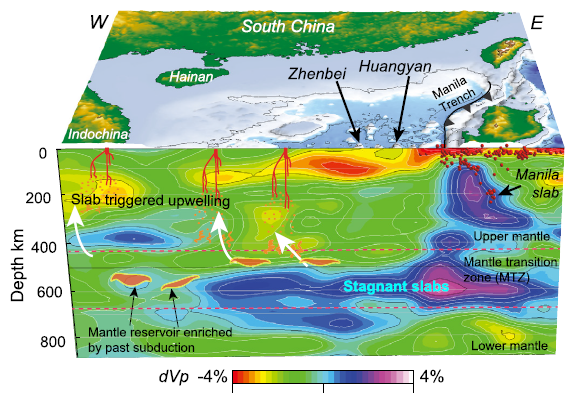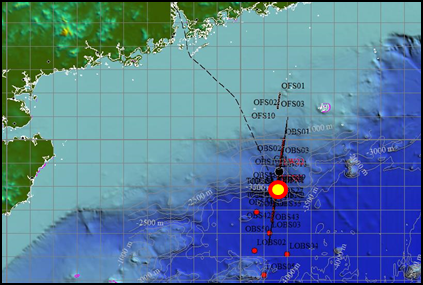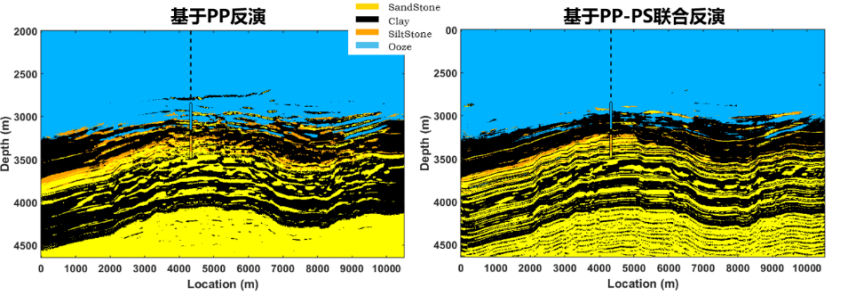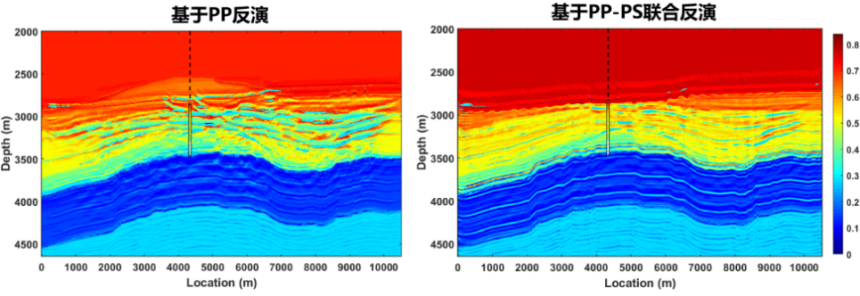六、南海海盆岩浆活动的深部物质来源和构造启示
Deep Material Origin and Tectonic Insight of Magmatism in the South China Sea Basin
边缘海盆地的岩浆活动是边缘海形成和演化中深部过程和构造运动在地表的产物。边缘海岩浆活动主要由海盆扩张期的洋中脊岩浆作用、海盆和周边大陆边缘的板内岩浆作用、海盆俯冲/被俯冲形成的弧岩浆作用组成。这些不同种类的岩浆活动记录了边缘海形成和演化不同节点的深部和浅部构造机制,是认识边缘海演化生命历史的重要研究对象。南海是西太平洋地区最大的边缘海盆地,处于三大板块汇聚的场所,虽然演化时间较短,却经历了陆缘张裂、洋脊扩张到洋壳俯冲的完整威尔逊旋回。围绕板缘张裂南海海盆的成因机制和构造演化模式的学术目标,我室“大洋岩石圈演化“团队,针对南海海盆及周边大陆新生代板内火山岩和中国台湾东部蛇绿岩套开展地球化学研究,在新生代火山物质来源及其深部地幔约束、初始俯冲弧前响应的岩浆成因模型等两个方向取得进展,为认识南海形成和演化的深部过程和构造机制提供了新的重要线索。

南海地区新生代火山岩分布图(Qian et al., 2022)
南海板内岩浆作用记录深部俯冲物质的循环
Qian et al. (2022) 和 Yu X. et al. (2022) 开展南海海山和中南半岛溢流玄武岩的岩石学和地球化学研究,揭示南海地区的板内岩浆活动在南海海盆扩张期间零星分布,主体分布于海盆扩张停止之后。板内玄武岩的化学成分表现出了显著的多样性,记录了南海地区地幔地球化学组成和地幔岩性的不均一性,及其物质组成来源的多样性。整体上,板内玄武岩地球化学成分在时间和空间上的变化主要受控于地幔源区的不均一性和岩石圈厚度差异这两个因素。
同位素地球化学研究表明,南海及其周围地区新生代玄武岩地幔源区主要存在DMM-EM2-FOZO三端元组分,由富集组分构建的地幔不均一性很大程度上是因年轻俯冲洋壳(< 200 Ma)经地幔过渡带再循环所导致,同时可能存在部分下地幔来源的地幔柱物质的贡献。根据这些板内火山岩的时空演化和岩石地球化学结果,结合深部地震层析成像和区域构造背景,Qian et al. (2022)提出南海地区新生代火山活动与地幔过渡带和上部地幔物质的上涌减压熔融有关,进而揭示东南亚环形俯冲系统的深部动力过程、岩浆时空演化特征和深部物质循环过程。

板内岩浆作用推测的南海深部地幔物质组成和演化模式图
南海海盆初始俯冲的岩浆响应和深部机制
俯冲带之上的弧前-岛弧体系为重建(南海)洋盆的消亡历史提供有力支撑。Yu M. et al. (2022) 对中国台湾弧-陆碰撞造山带的蛇绿岩套深入开展地质调查、年代学和岩石地球化学研究,首次发现与蛇绿岩套海底扩张同期但略早于相应火山弧的埃达克岩和富Nb玄武岩脉体。研究表明,唯有初始俯冲引起弧前海底扩张的大地构造背景和年轻俯冲洋壳的高温高压变质熔融作用才能合理地解释火山弧埃达克岩和富Nb玄武岩脉体的地球化学组成。因此,中国台湾蛇绿岩套是年轻南海发生初始俯冲时形成的弧前,一方面记录南海初始俯冲的岩浆响应早至~18 Ma,指示南海初始俯冲始于早中新世;另一方面揭示俯冲板片的年龄是决定其俯冲板片变质熔融行为和形成弧前不同岩浆组合的关键。研究揭示了南海海盆初始俯冲弧前响应的岩浆成因模型和深部机制。

南海海盆东侧俯冲形成的弧前岩浆作用成因模式图
主要参考文献:
Qian, S., Salters, V., McCoy-West, A. J., Wu, J., Rose-Koga, E. F., Nichols, A. R. L., Zhang, L., Zhou, H., & Hoernle, K. (2022). Highly heterogeneous mantle caused by recycling of oceanic lithosphere from the mantle transition zone. Earth and Planetary Science Letters, 593: 117679.
Yu, M., Yumul Jr., G. P., Dilek, Y., Yan, Y., & Huang, C.-Y. (2022). Diking of various slab melts beneath forearc spreading center and age constraints of the subducted slab. Earth and Planetary Science Letters, 579: 117367.
Yu, X., Liu, Z., Zeng, G., Cao, W., Meas, R., Hoang, L. V., & Sang, P. N. (2022). Mantle plume-stagnant slab interaction controls the generation of a mixed mantle source for continental intraplate basalts. Lithos, 426-427: 106795.
The South China Sea is the largest marginal sea in the western Pacific Ocean. Since the expansion of the basin, a large number of basaltic magmas has been formed inside and outside the basin. The magmatic activities consist of mid-ocean ridge magmatism during basin expansion, intraplate magmatism in the basin and surrounding continental margins, and arc magmatism formed by basin subduction. To decipher these different types of magmatic activities and to better understand the deep and shallow tectonic mechanisms in the formation and evolution of the marginal sea, the Oceanic Lithosphere Evolution Group of the Laboratory has performed a series of geochronologic and geochemical studies of the lithosphere of the South China Sea in year 2022.
A combination of spatial and temporal geochemical studies from the South China Sea seamounts and surrounding continental intraplate basalts show that three different mantle components (DMM-EM2-FOZO) are required in the source region (Qian et al. 2022; Yu X. et al. 2022). Variations in mantle source heterogeneity coupled with melting process control spatial-temporal geochemical variations of these lavas. The mantle source heterogeneity as recorded by these intraplate basalts is further considered to be originated from recycled young oceanic crustal materials and potential upwelling mantle plume from deep.
Compiling the geochronology and geochemistry evidence from the East Taiwan Ophiolite (ETO), it is revealed that adakitic dikes crystallized along with the normal and enriched mid-ocean ridge basalt like oceanic crust during the subduction initiation of South China Sea basin (Yu M. et al., 2022). The origins of the ETO adakitic dikes are related to amphibolite-facies melting of the subducted slab beneath the Luzon forearc spreading center. The E-MORB-type rocks are Nb-enriched basalts and relate to the Nb-enriched slab melts derived from further melting of the hot eclogitic residuum of the young South China Sea subducted slab. An early Miocene induced-subduction initiation of the South China Sea and the delayed near-trench spreading of the Luzon forearc is inferred.
Ocean Bottom Flying Node Seismometer (OBFN) Development and Geophysical Exploration
针对当前超深水(>1500m)海底节点地震勘探存在成本高、周期长、数据处理解释有瓶颈等问题,我室“地球物理勘探技术”团队在国家重点研发计划“深海关键技术与装备”重点专项的资助下,开发了带有导航定位与自主航行功能的海底飞行节点地震仪(Ocean Bottom Flying Node, OBFN)。该技术采用海底长基线实时定位技术对多台OBFN进行导航定位,提高了节点布放与回收效率;研制了带有时标功能的长基线定位基站,降低了数据采集授时成本;实现采集模块与飞行节点运载器之间软链接,可保证采集模块与海底良好耦合,提高地震信号记录质量,同时也方便后期数据下载与维护处理。
海底飞行节点地震仪海试成功
2022年在南海北部超深水盆地荔湾凹陷开展了OBFN海试,最大下潜水深达到2861.4 m,在国际上首次实现了超深水海底飞行节点地震仪数据采集,获得了高质量海底四分量地震记录。此次海试发展了海底四分量地震数据弹性波成像与定量解释新技术,实现了OBFN仪器研发、布放与回收、数据采集、处理与解释全链条创新,OBFN所有元器件全部实现国产化,整体处于国际并跑-领跑水平。

图7.1 南海北部超深水盆地荔湾凹陷海试区

图7.2 海底飞行节点地震仪布放、回收与海试团队
针对OBFN地震数据特点,发展了基于声-弹耦合方程的四分量多参数全波形反演方法,以实现中浅层速度建模;利用上-下行波P/S解耦的反射走时与波形反演方法,以实现中深层的速度建模;提出了共检波点域弹性波高斯束矢量成像方法,以实现纵波与转换波的高效成像;基于声-弹耦合方程的地震逆时偏移成像方法和最小二乘偏移成像方法,以实现高精度阻抗成像。这些方法联合构成了海底多分量地震数据弹性波成像技术。理论模型测试表明,该技术建模准确,成像深度误差<0.5%。
将该技术应用于我国南海深水荔湾凹陷OBFN实测地震数据,获得了U1501站位所在区域的地下纵、横波速度结构和成像剖面,地质构造合理。将该技术应用于我国东海浅水OBN四分量实测地震数据,成功获得了东海秋月探区的地下高波数纵、横波速度结构和成像剖面,揭示了中浅层的构造特征,与测井吻合较好。
深海地球物理方法进展
深海地层岩石物理响应机理和建模技术是基于弹性波地震数据进行岩性和孔隙度预测的物理基础,研发了最小二乘框架下弹性波PP和PS联合叠前AVO反演技术,相比于单纯的PP反演结果,PP-PS联合反演对薄层和沉积地层的连续性有更好刻画。对南海海试OBFN弹性波数据开展PP-PS联合AVO反演测试,获得了表征深海沉积地层的纵波速度、横波速度和密度分布。利用随机森林机器学习算法建立弹性波速度与岩性和物性参数的映射关系,结合PP-PS联合反演结果对深水沉积地层的岩性和孔隙度开展预测,岩性和孔隙度地震预测结果能够较好的刻画深水沉积地层的非均质性分布。


图7.3 针对南海深海沉积地层开展基于PP反演和PP-PS联合反演的(上)岩性和(下)孔隙度预测结果对比
主要参考文献:
He, W. and Geng, J. Elimination of free-surface-related multiples by combining Marchenko scheme and seismic interferometry, Geophysics, 2022, 87(3): Q1-Q14.
Liu, Y., Liu, W., Wu, Z., Yang, J. Reverse time migration with an exact two-way illumination compensation, Geophysics, 2022, 87(2): S53-S62.
In order to address the high cost, long cycle, and bottleneck in data processing and interpretation of seismic exploration for deep-sea (>1500m) underwater nodes, the Geophysical Exploration Technique Group led by Prof. Jianhua Geng has developed an Ocean Bottom Flying Node Seismometer (OBFN) with autonomous navigation capabilities, under the support of the National Key Research and Development Program for "Key Technologies and Equipment for Deep-sea". This technology uses underwater long-baseline real-time positioning technology to navigate and locate multiple OBFNs, improving the efficiency of node deployment and recovery.
In 2022, an OBFN sea trial was conducted in the Lixiwan depression in the northern part of the South China Sea's ultra-deepwater basin. The maximum diving depth reached 2861.4 meters, and for the first time internationally, data was collected from a super-deep-sea seabed flying node seismograph, obtaining high-quality seafloor four-component seismic records. This sea trial developed new technology for elastic wave imaging and quantitative interpretation of seafloor four-component seismic data, achieving full-chain innovation in the development, deployment, recovery, data collection, processing, and interpretation of OBFN instruments. All components of the OBFN instrument have been domestically produced, and overall, the technology is at the forefront of the international community. Under the framework of least-squares, an elastic wave PP-PS joint pre-stack AVO inversion technology was developed. Compared with the results of single PP inversion, the PP-PS joint inversion can better characterize the continuity of thin layers and sedimentary formations.

